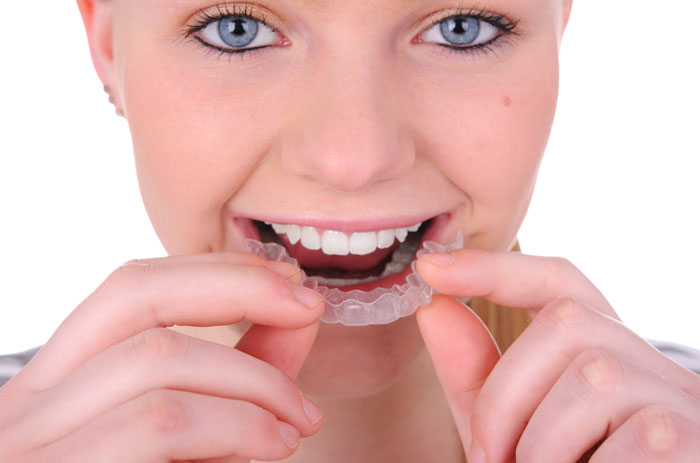Transform Your Smile with Clear Aligners
For a long time, people thought that orthodontic treatment was painful, inconvenient, and easy to see. For decades, traditional metal braces were the only way to get straighter teeth, but many adults who valued comfort and subtlety didn't want to wear them. But malocclusion, which is also known as misalignment, is still one of the most common oral health problems. It affects both function and long-term periodontal health.
Clear aligners now offer a choice that combines clinical accuracy with a look that isn't too obvious. For many people, this method is not only a cosmetic improvement but also a smart investment in their oral health.
Why Teeth Become Misaligned
Before you can understand how important orthodontic care is, you need to know why teeth become misaligned. In many cases, the causes are **genetic**. For example, a child may inherit a large jaw, crowded teeth, or uneven eruption patterns from their parents. Other things that can cause this are sucking your thumb as a child, losing baby teeth too soon, or getting hurt.
What starts as a little crowding or spacing can eventually change the way you bite, which can cause problems like **uneven wear**, **tension in the jaw**, or trouble cleaning certain areas. Not completely removing **plaque** from teeth that are close together raises the risk of **gingival inflammation**, and over time, this may make patients more likely to develop more serious conditions like **periodontitis**.
Treatment Has Come a Long Way
Fixed metal braces are still a great option for complicated orthodontic cases, especially when the bones need to be moved a lot or there are big differences in the way they are shaped. But for mild to moderate misalignment, clear aligners are now a very effective solution that has benefits that go beyond looks.
Clear aligners are custom-made plastic trays that you wear over your teeth instead of brackets and wires. Each set of trays puts a gentle, controlled pressure on the teeth, slowly moving them into better positions. The provider's website says that these aligners need to be changed every one to two weeks. This lets the patient move through each stage of treatment without pain.
This method depends a lot on cutting-edge technology. **Digital imaging** and **3D modeling** make it possible to create a precise, individualized treatment plan that makes sure every change is planned and every outcome is known.
Designed for Comfort and Discretion
Patients often choose clear aligners because they are nearly invisible, but comfort is just as important. The smooth, custom-shaped trays don't cause the irritation that brackets and wires do. There are no changes to the wires that need to be tightened, and there are no dietary restrictions. You can take the aligners out to eat and brush your teeth.
The provider says that their preferred aligner system has more surface area coverage than many others, which gives them more control over how teeth move and often means they don't need to use bonded attachments. This detail, while subtle, illustrates the advancing science of aligner therapy: function and form must collaborate to achieve results that are both enduring and aesthetically pleasing.
Not Every Case Is the Same
Many patients can use clear aligners, but not all of them. Traditional braces may still be needed for people with very different bites, teeth that are very rotated, or teeth that are stuck. Also, compliance is very important: to make sure that the planned progress stays on track, aligners must be worn for about 22 hours a day.
Not wearing it consistently can make treatment take longer or cause a relapse. This is why providers carefully look at a patient's habits, gum health, and structural problems before suggesting aligners as the best treatment.
What to Expect During and After Treatment
The first step is a full evaluation, which usually includes **digital scanning** and imaging. Once a personalized plan is made, patients get a set of aligners to wear one after the other. You may not need to go as often as you would with traditional orthodontics, but regular checkups make sure that your teeth are moving in the right direction.
After the active treatment is over, the retention phase begins. You have to wear a **retainer** every night to keep the results. If you don't use it, soft tissues and bone may slowly let teeth move back to where they were before. This commitment after treatment is very important for making sure that the benefits of alignment last for years to come.
A Healthier Smile, in More Ways Than One
The changes in appearance are clear, but the changes in function are just as important. Cleaning teeth that are properly aligned is easier, and they are less likely to trap plaque. This helps keep your gums healthy in the long run, lowers the risk of enamel wear from bad bite forces, and might even help relieve stress in the jaw joints.
According to the practice's own research, alignment also makes chewing easier and keeps the mouth stable, both of which are important for the health of a smile.
In Closing
It's never been easier, more private, or more high-tech to straighten teeth. Clear aligners are a smart choice for people who want to improve both the look and health of their smile. A full consultation can help you decide if this new method is right for you.
Call (407) 777-2071 today to learn more or set up an evaluation.

